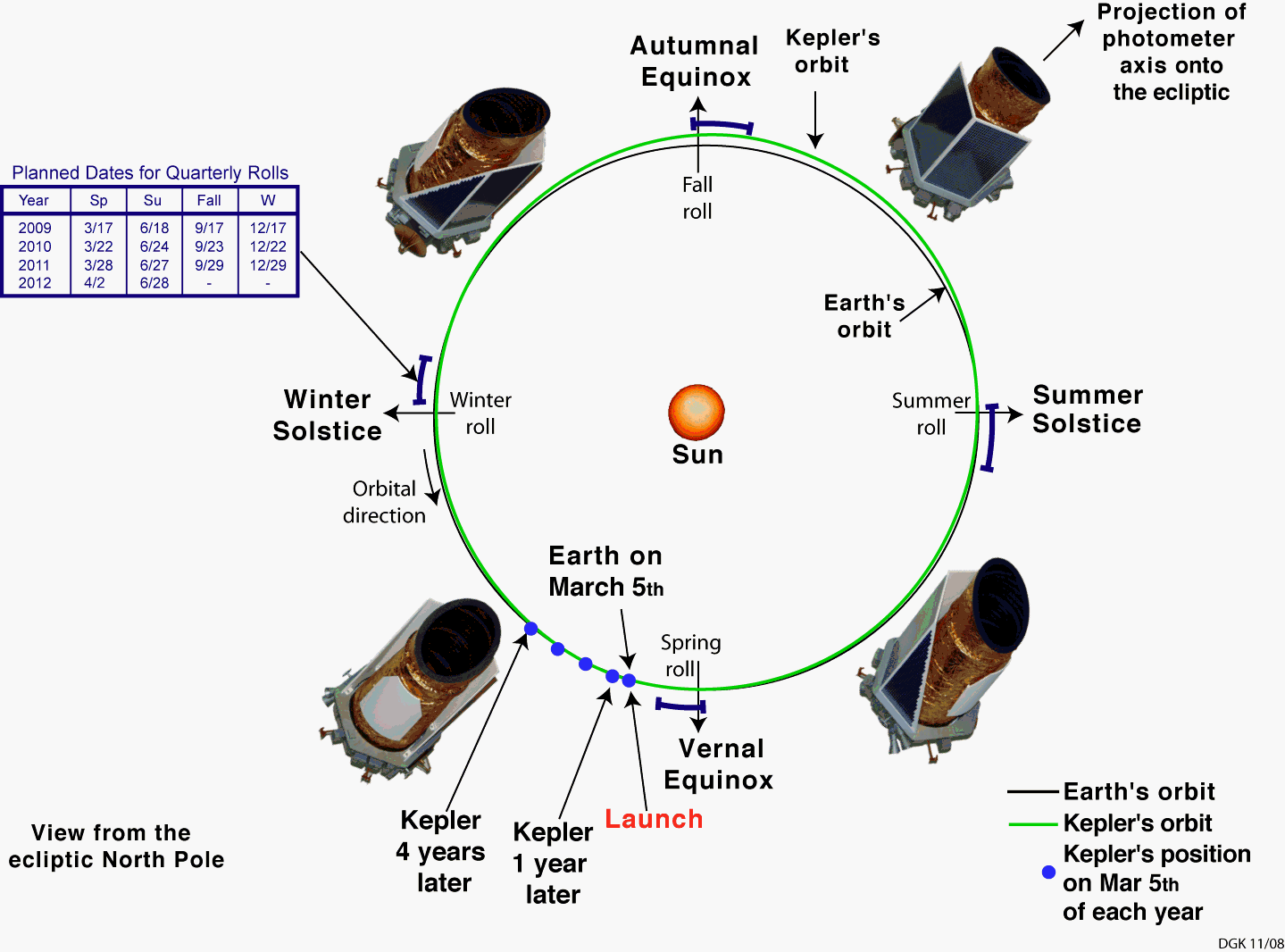|
|
|
||

| |||
| Overview of the Guest Observer Program | |||
|
MISSION CHARACTERISTICS The search for Earth-size and larger planets through transit events about solar-type stars will involve continuous monitoring of over +150,000 stars, consisting largely of F through M main sequence stars, through mission life. Kepler is in an Earth-trailing heliocentric orbit, which insures a thermally stable environment and provides the ability to remain on a single pointing for the mission duration. Pointed observations away from the single stare position of the mission cannot be accommodated by Kepler; GO targets are limited to the objects available in the fixed FOV. Quarterly rolls are performed – one roll every 93 days – to reorient the solar arrays. With each roll, the stars in the FOV land on different regions of the detector relative to their pre-roll position, introducing discontinuities in the light curve. |

|
|
Kepler was designed for optimum performance for 9 < mkep < 15 stars but potential GOs please note that the useful magnitude range for GO programs is muchg broader. targets brighter than mkep = 11 are saturated, but photometric precision is recoverable, although expensive in terms of pixels, down to mkep = 5. Kepler will achieve a benchmark photometric, shot noise-dominated precision, near the middle of this magnitude range, of 50 parts-per-million (ppm) on a mkep = 12 G2V star in 30 minutes of integration. on targets as faint as 20th magnitude if the photometric precision of 3% over 30 min yields scientifically valuable results. The broad photometric bandpass has a half-maximum transmission range of 430 to 840 nm. The instrument has neither changeable filters nor dispersing elements. The detector has an image scale of ~3.98 arcseconds per pixel. The image quality varies with position in the focal plane, with the 95% encircled energy diameter ranging from 3.1 to 7.5 pixels, with a median of 4.2 pixels. The percentage of point-source flux concentrated in the center pixel is between 20% and 62%, with a median value of 45%. Because of a very stable focal plane, a precision better than 1 milliarcsecond over periods up to three months is expected for the relative centroid positions of stars. Previous: Key Project Next: Observing Modes |
Questions concerning Kepler's science opportunities and open programs, public archive or community tools? Contact us via the email address.